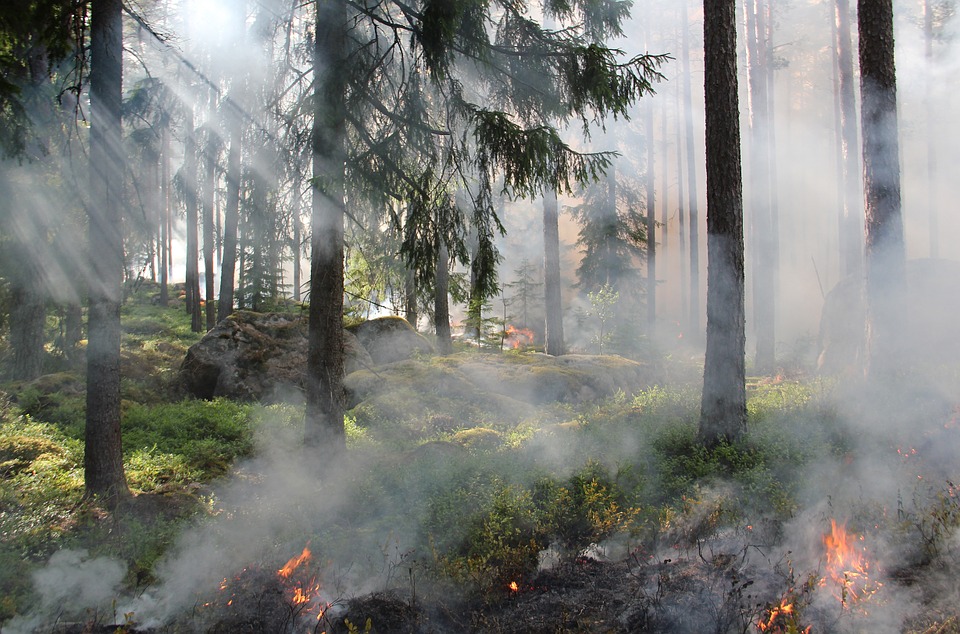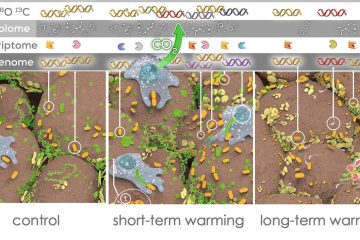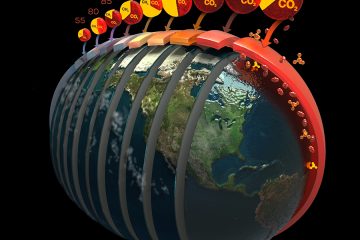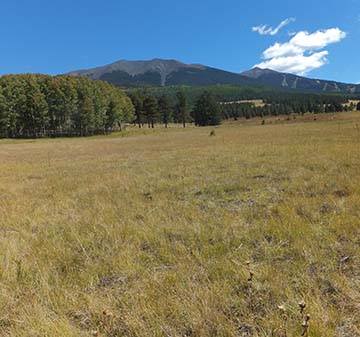Fire and Disturbance

Fire plays an important role in controlling structure and function in many ecosystems. Fire regimes across the globe are changing as a result of human management and climate change. Research in Ecoss seeks to understand feedbacks between fire disturbance and ecosystem structure and function in multiple contexts, from savannas in South Africa to Arctic tundra and boreal forests in Alaska and Siberia. Here are some of the topics we work on:
Fire, Management, and the Global Carbon Cycle
Fire, a natural ecological disturbance, has been suppressed in U.S. forests for much of the past century. This has prevented damage to property and protected timber resources, but has caused many forests to develop in an unnatural manner, resulting in dense stands of small trees that are now poised to fuel catastrophic fires when they do ignite. A warming and drying climate exacerbates this risk. How forests function has big impacts to the global carbon cycle; when trees grow they remove carbon dioxide from the atmosphere, and when they burn, some of that is returned to the atmosphere. Read more here.
Increasing Fire Severity and the Loss of Legacy Carbon from Forest and Tundra Ecosystems
Climate warming in northern latitudes has led to an intensification of wildfire disturbance. Increased fire frequency, extent, and severity is expected to strongly impact the structure and function of northern ecosystems. As a large proportion of organic carbon (C) in Arctic tundra and boreal coniferous forests resides in the soil organic layer (SOL), combustion of this layer can lead to large C emissions. In fact, increased depth of SOL burning associated with an intensifying fire regime, might change northern ecosystems from net C sinks into net C sources. For this shift to occur, burning must release old C that escaped combustion in one or more previous fires. We term these old SOL C pools ‘legacy C’ because they are carryover of C pools sequestered prior to past disturbance events or under past climate. Our research combines SOL consumption metrics with radiocarbon techniques for aging soil C to determine the ecosystem, landscape, and regional controls on the combustion of legacy C in forest and tundra regions. Read more here.
Post-fire Carbon Dynamics of Boreal Forests
Boreal forests cover 40% of the vegetated land area above the Arctic Circle and are a critical component of arctic ecosystems. Global change models predict boreal forests will become increasingly susceptible to fire activity with climate warming. Because these forests contain a large proportion of global terrestrial C stocks, changes in the fire regime are likely to alter global C cycling. Increased fire activity will increase C emissions to the atmosphere, with a potential positive feedback to climate warming. However, an altered fire regime may also affect forest regrowth and permafrost degradation, responses that could magnify or offset this feedback. Fire effects on these ecological mechanisms remain uncertain but will ultimately determine whether Arctic ecosystems act as a C source or sink under future climate change scenarios. The primary objective of this research is to increase our understanding of post-fire C dynamics in boreal forests of the Siberian arctic by elucidating the ecological mechanisms by which increased fire severity could influence C accumulation and storage during forest succession. Read more here.
Long Term Ecological Research in Alaska
Vegetation composition and other structural aspects of the ecosystem and landscape modulate climate sensitivity of disturbances and associated ecosystem responses to those disturbances. For example, the distribution of conifers and hardwoods on the landscape influences both fire severity and the outbreak behavior of insects and pathogens, which influence the likelihood that the system will shift to a new resiliency cycle. However, changing disturbance regimes also influence the climate sensitivity of species, plant communities and landscape functional types. The impacts of permafrost thaw on soil water content, for example, strongly affect vegetation responses to climate warming. Moreover, important thresholds may be manifested through interactions between changing disturbance regimes. How increased fire severity is influencing the vulnerability of permafrost to thaw, and how insect and pathogen outbreaks will affect fire regimes and associated successional pathways are two prominent examples. Understanding the underlying mechanisms for these interaction pathways is essential for predicting whether climate-driven changes will contribute to ecosystem and landscape resilience or cause abrupt shifts to a new landscape mosaic with fundamentally different dynamics. Read more here.
Research outlined above is being conducted by Michelle Mack, George Koch and others.



